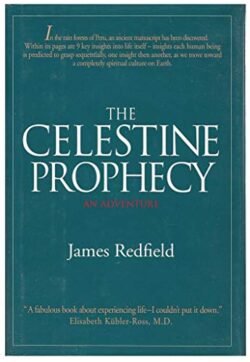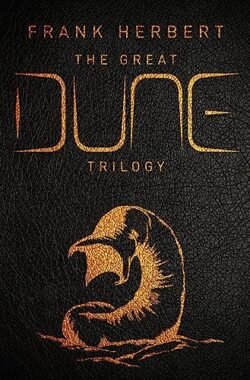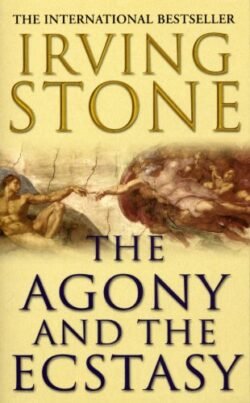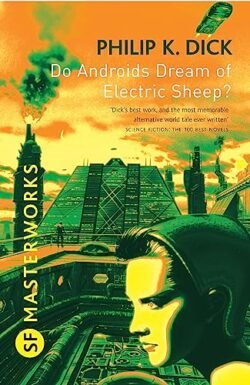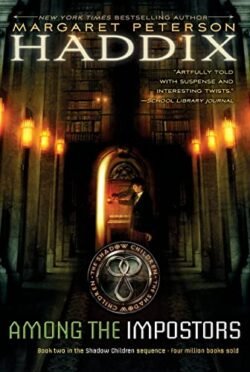“The Celestine Prophecy: An Adventure” by James Redfield, first published in 1993, is a novel that blends spiritual and adventure elements to explore various psychological and spiritual ideas rooted in New Age philosophies. The story is presented as a manuscript containing nine key insights that humanity is predicted to grasp as we enter a new era of enhanced consciousness and spiritual awakening. Set in Peru, the narrative follows the protagonist’s journey to understand and live according to these insights, which are primarily focused on understanding energy fields, the power of thought, and synchronicities that guide us towards our destinies. Through encounters with various characters who elucidate each of the nine insights, the protagonist—and the reader—are invited to consider how these spiritual truths can be applied to personal growth and the betterment of society. Character Analysis The novel does not focus on character development in the traditional sense but uses its characters as vehicles to convey the nine insights. The protagonist serves as an everyman figure, allowing readers to place themselves in the story and explore the implications of the insights for their own lives. Themes and Analysis Spiritual Awakening: Central to the novel is the theme of an impending global spiritual awakening, where individuals become more attuned to their spiritual nature and the interconnectedness of all life. Energy and Consciousness: The insights describe a world where human beings can perceive and interact with energy fields, emphasizing the impact of positive and negative thoughts on oneself and the environment. Synchronicity: A key concept in the book is synchronicity, or meaningful coincidences, which are presented as signs that guide individuals on their spiritual paths. “The Celestine Prophecy: An Adventure” has captivated readers with its optimistic portrayal of human potential and its vision of a world transformed by a deeper understanding of spiritual principles. While its reception has been mixed, with some critics questioning the depth and originality of its insights, the novel has undeniably touched a chord with many who are searching for meaning and connection in a rapidly changing world. James Redfield’s work invites readers to explore the possibility that there is more to life than the material world and that each person has a role to play in the evolution of human consciousness. Whether viewed as a spiritual guidebook or a compelling adventure story, “The Celestine Prophecy” remains a significant cultural artifact of the New Age movement, offering a hopeful perspective on personal and collective transformation. If the summary caught your interest, Consider reading the full book on AbeBooks. Explore this book on AbeBooks
The Great Dune Trilogy
“The Great Dune Trilogy” encompasses the first three novels of Frank Herbert’s seminal science fiction series: “Dune,” “Dune Messiah,” and “Children of Dune.” Set in a distant future where interstellar travel is facilitated by the spice melange, found only on the desert planet of Arrakis (Dune), the trilogy explores themes of politics, religion, and power through the saga of the Atreides family. The narrative unfolds in a complex universe dominated by feudal houses, the mystical Bene Gesserit sisterhood, and the desert Fremen of Arrakis. Central to the story is Paul Atreides, whose journey from noble son to the messianic Muad’Dib reshapes the galaxy’s socio-political fabric. Herbert’s work is celebrated for its intricate plot, deep philosophical underpinnings, and the ecological and cultural detail of the world he created. Character Analysis Paul Atreides: Paul Atreides, also known as Muad’Dib, is the protagonist whose transformation drives the trilogy’s narrative arc. Born to Duke Leto Atreides and Lady Jessica, a member of the Bene Gesserit, Paul inherits a legacy fraught with danger and expectation. His journey from a young nobleman to the leader of the Fremen and eventual ruler of the Known Universe is marked by trials that test his morality, identity, and vision for the future. Paul’s character explores themes of destiny, leadership, and the burdens of prophecy. Themes and Analysis Power and Politics: The trilogy delves into the mechanisms of political power, the manipulation of populations through religion and myth, and the struggles between imperial, feudal, and tribal systems of governance. Ecology and Environment: Herbert places a strong emphasis on the ecological system of Arrakis, its influence on culture, and the broader implications of environmental stewardship and manipulation. Philosophy and Religion: Through Paul’s journey and the broader narrative, Herbert explores philosophical questions about predestination, free will, and the construction of myths, integrating elements from various Earth religions to create a rich theological tapestry. “The Great Dune Trilogy” stands as a monumental achievement in science fiction, offering a narrative that is as thought-provoking as it is entertaining. Frank Herbert’s ability to weave complex themes into an expansive, detailed universe has made the series a touchstone in the genre, influencing countless works and discussions in the decades since its publication. The trilogy’s exploration of the human condition, set against the backdrop of a meticulously crafted future, continues to resonate with readers, cementing its place as a classic of science fiction literature. If the summary caught your interest, Consider reading the full book on AbeBooks. Explore this book on AbeBooks
11/22/63
“11/22/63” by Stephen King is a thrilling and thought-provoking novel that combines elements of historical fiction, science fiction, and romance. The story follows Jake Epping, a high school English teacher from Lisbon Falls, Maine, who discovers a time portal in a local diner’s storeroom that leads to September 9, 1958. Encouraged by the diner’s owner, Al, Jake embarks on an ambitious mission to prevent the assassination of President John F. Kennedy, believing that changing this single event could improve the world. As Jake travels back in time, he finds himself entangled in the complexities of the past, falls in love, and faces the profound moral and ethical dilemmas posed by time travel. King masterfully weaves historical details into the narrative, exploring the impact of altering history and the intricate web of consequences that follow. Character Analysis Jake Epping Jake Epping is portrayed as an ordinary man who is given an extraordinary task. His character is deeply developed through his journey into the past, where he not only seeks to change history but also grapples with the personal connections he forms in the 1950s and 1960s. Jake’s struggle with the weight of his mission and the implications of his actions on the timeline are central to the novel’s exploration of fate, free will, and the nature of love. Themes and Analysis The Consequences of Changing History: The novel delves into the ethical considerations and unforeseen consequences of altering historical events, posing questions about destiny and the role of individuals in shaping the future. Love Across Time: Jake’s romance with Sadie Dunhill, a librarian in Jodie, Texas, adds a poignant layer to the story, highlighting the timeless and transformative power of love. The Complexity of Time Travel: King explores the mechanics and paradoxes of time travel, presenting it as a double-edged sword that offers the possibility of change but at great risk and with complex moral implications. “11/22/63” is a captivating blend of genres that showcases Stephen King’s versatility as a writer. Through the lens of time travel, King offers a unique perspective on one of the most significant events in American history, wrapped in a story of love, loss, and the human condition. The novel is a compelling examination of the past’s grip on the present and the intricate dance between fate and free will. With its rich character development, meticulous attention to historical detail, and profound thematic depth, “11/22/63” stands as a testament to King’s storytelling prowess, offering readers a deeply immersive and unforgettable experience. If the summary caught your interest, Consider reading the full book on AbeBooks. Explore this book on AbeBooks
The Agony and the Ecstasy
“The Agony and the Ecstasy” by Irving Stone is a compelling biographical novel that chronicles the life of the Renaissance artist Michelangelo Buonarroti. Set against the backdrop of 15th and 16th century Italy, the book offers a vivid portrayal of Michelangelo’s tumultuous journey as he becomes one of the most revered artists in history. Through meticulous research and rich narrative detail, Stone explores Michelangelo’s artistic process, his struggles with patrons and political figures, and his personal life. The novel delves into the creation of some of Michelangelo’s most iconic works, including the statues of David and the Pietà, and the painting of the Sistine Chapel ceiling, providing insight into the passion, conflict, and genius that defined his life. Character Analysis Michelangelo Buonarroti: Michelangelo is portrayed as a man of intense passion, singularly devoted to his art. His relentless pursuit of perfection and his uncompromising vision often put him at odds with his patrons, including popes and political leaders. Stone’s Michelangelo is a complex character—a genius driven by an insatiable desire to create, yet plagued by self-doubt and personal turmoil. His dedication to his work and his ability to overcome adversity underscore his extraordinary talent and resilience. Themes and Analysis The Creative Process: The novel offers an in-depth exploration of the artistic process, highlighting the challenges and triumphs Michelangelo faces as he brings his visions to life. Art and Power: Stone examines the relationship between art and power, depicting how Michelangelo’s work is influenced by the political and religious dynamics of his time. The Human Spirit: At its core, “The Agony and the Ecstasy” is a testament to the strength of the human spirit, showcasing how Michelangelo’s dedication to his craft transcends personal and professional obstacles. “The Agony and the Ecstasy” is not just a novel about an artist; it is a powerful narrative that captures the essence of creativity, ambition, and the enduring impact of Michelangelo’s work on the world. Irving Stone masterfully brings to life the story of a man whose legacy is immortalized in marble and fresco, inviting readers to experience the passion and pain behind some of the most magnificent art ever created. This meticulously researched and beautifully written book offers a window into the Renaissance and the life of one of its greatest artists, making it a must-read for lovers of history, art, and exceptional storytelling. If the summary caught your interest, Consider reading the full book on AbeBooks. Explore this book on AbeBooks
Do Androids Dream Of Electric Sheep?
“Do Androids Dream of Electric Sheep?” by Philip K. Dick is a landmark science fiction novel set in a post-apocalyptic future where Earth is devastated by nuclear war, leading to widespread desolation and the extinction of many animal species. The story follows Rick Deckard, a bounty hunter employed to identify and “retire” rogue androids that have fled to Earth. These androids, indistinguishable from humans except for their lack of empathetic capacity, challenge the very notion of what it means to be human. As Deckard tracks down these androids, he is forced to confront his own morality, empathy, and the value of artificial life. Character Analysis Rick Deckard: Rick Deckard, the novel’s protagonist, embodies the moral and existential quandaries central to the story. As a bounty hunter of androids, his job requires him to suppress his empathy—a trait that distinguishes humans from androids in the novel’s universe. Deckard’s encounters with advanced Nexus-6 model androids, who exhibit sophisticated emotional responses, force him to question the ethics of his work and the nature of his own humanity. Androids (Andys): The androids, or “andys,” primarily the Nexus-6 models, challenge preconceived notions of artificial intelligence and soullessness. Characters like Rachael Rosen and Pris Stratton are particularly instrumental in blurring the lines between human and machine. Their complex behaviors, emotions, and desires for self-preservation prompt readers to reconsider the boundaries of empathy and the rights of sentient beings, regardless of their origin. Themes and Analysis Empathy as a Measure of Humanity: The novel posits empathy as the defining trait of humanity, explored through the empathy test used to identify androids and the characters’ interactions. The Value of Life: Whether through Deckard’s moral conflict or the androids’ fight for survival, the narrative probes the value of life in a world where the line between organic and artificial life is blurred. “Do Androids Dream of Electric Sheep?” offers a profound exploration of identity, empathy, and ethics within the framework of a dystopian future. Philip K. Dick masterfully crafts a narrative that is as engaging as it is thought-provoking, pushing readers to question the essence of humanity in the face of advanced artificial intelligence. The novel’s enduring relevance speaks to ongoing debates about AI, making it a seminal work in science fiction and beyond. Rick Deckard’s journey through a decaying world where androids dream of life serves as a compelling meditation on what it means to be truly human. “Do Androids Dream of Electric Sheep?” offers a profound exploration of identity, empathy, and ethics within the framework of a dystopian future. Philip K. Dick masterfully crafts a narrative that is as engaging as it is thought-provoking, pushing readers to question the essence of humanity in the face of advanced artificial intelligence. The novel’s enduring relevance speaks to ongoing debates about AI, making it a seminal work in science fiction and beyond. Rick Deckard’s journey through a decaying world where androids dream of life serves as a compelling meditation on what it means to be truly human. If the summary caught your interest, Consider reading the full book on AbeBooks. Explore this book on AbeBooks
Among the Impostors (Shadow Children)
As Luke Garner begins his time at Hendricks School for Boys under the alias Lee Grant, he quickly realizes that the school is not what it seems. The isolation and lack of camaraderie among the students create an atmosphere of fear and suspicion. Luke’s desire to fit in and make friends is overshadowed by the constant threat of being discovered by the Population Police. His journey takes a pivotal turn when he accidentally discovers a secret garden hidden behind the school’s walls, leading him to a group of students who share his secret. Together, they start to plan ways to resist the Population Police and fight for their right to live freely. However, Luke must first overcome his fears and doubts to truly become part of the resistance. Character Analysis Luke Garner/Lee Grant: Luke, the protagonist, is characterized by his resilience, courage, and moral compass. Throughout the novel, his character evolves from a frightened, hidden child into a more confident individual who seeks to challenge the injustices of his society. His internal struggles with identity and belonging highlight the emotional impact of living a life under constant threat. Other Students at Hendricks: While specific students are not deeply individualized, they collectively represent the broader impacts of the Population Law on children in this society. Their initial distrust and isolation serve as a backdrop to Luke’s journey towards finding allies and forming meaningful relationships. “Among the Impostors” is filled with moments that underscore the tension and fear of living as a shadow child, as well as the hope and determination that emerge from resistance. While direct quotes are not provided here, the narrative is rich with Luke’s reflections on freedom, identity, and the importance of standing up against oppression. In conclusion, “Among the Impostors” by Margaret Peterson Haddix is a compelling continuation of the “Shadow Children” series that explores the psychological and social implications of a dystopian society’s laws on its most vulnerable members. Through Luke Garner’s journey of self-discovery and resistance, Haddix invites readers to consider the value of individuality and the power of collective action in the face of tyranny. The novel not only advances the overarching story of the series but also deepens the emotional and philosophical questions raised by Luke’s circumstances, making it a thought-provoking read for young adults and older readers alike. If the summary caught your interest, Consider reading the full book on AbeBooks. Explore this book on AbeBooks

